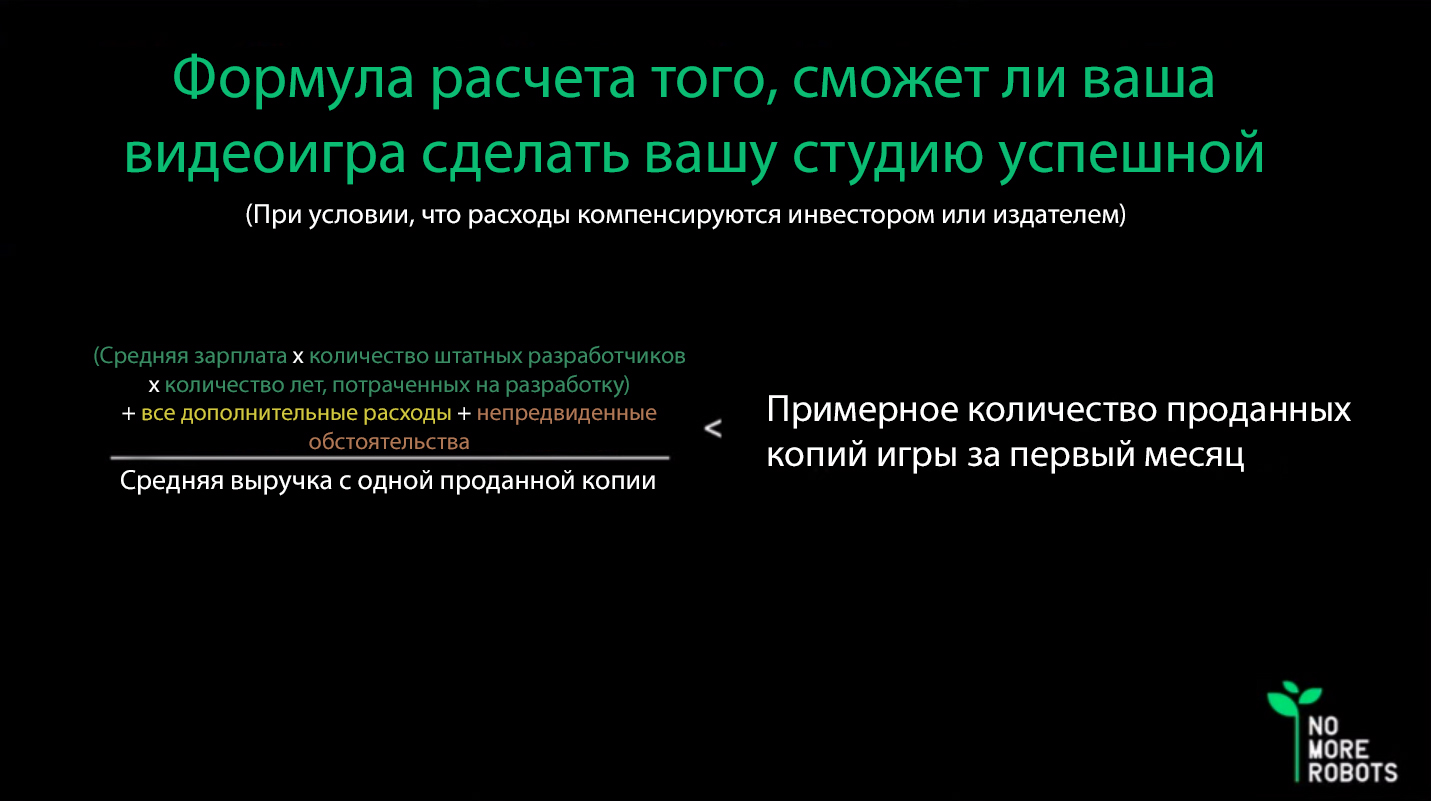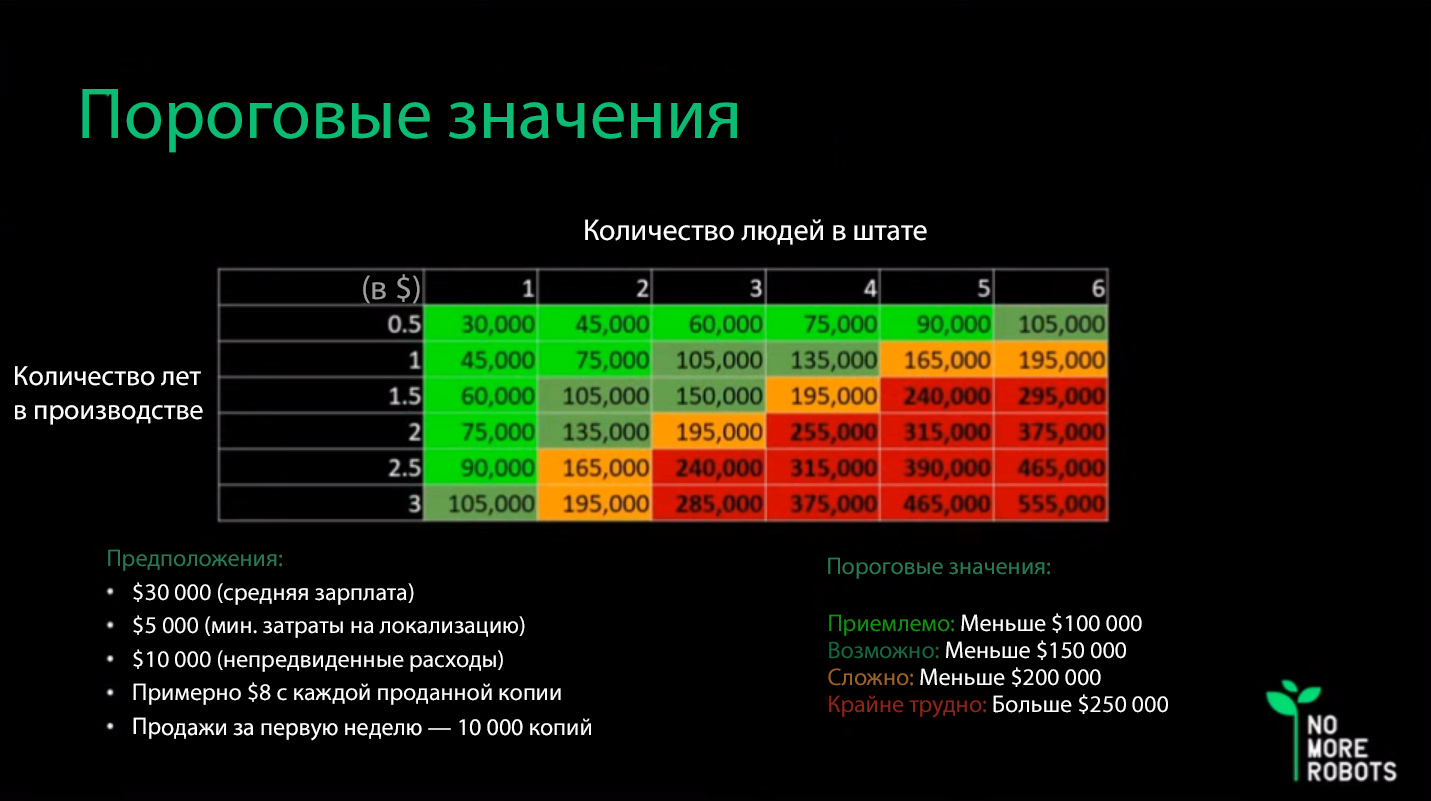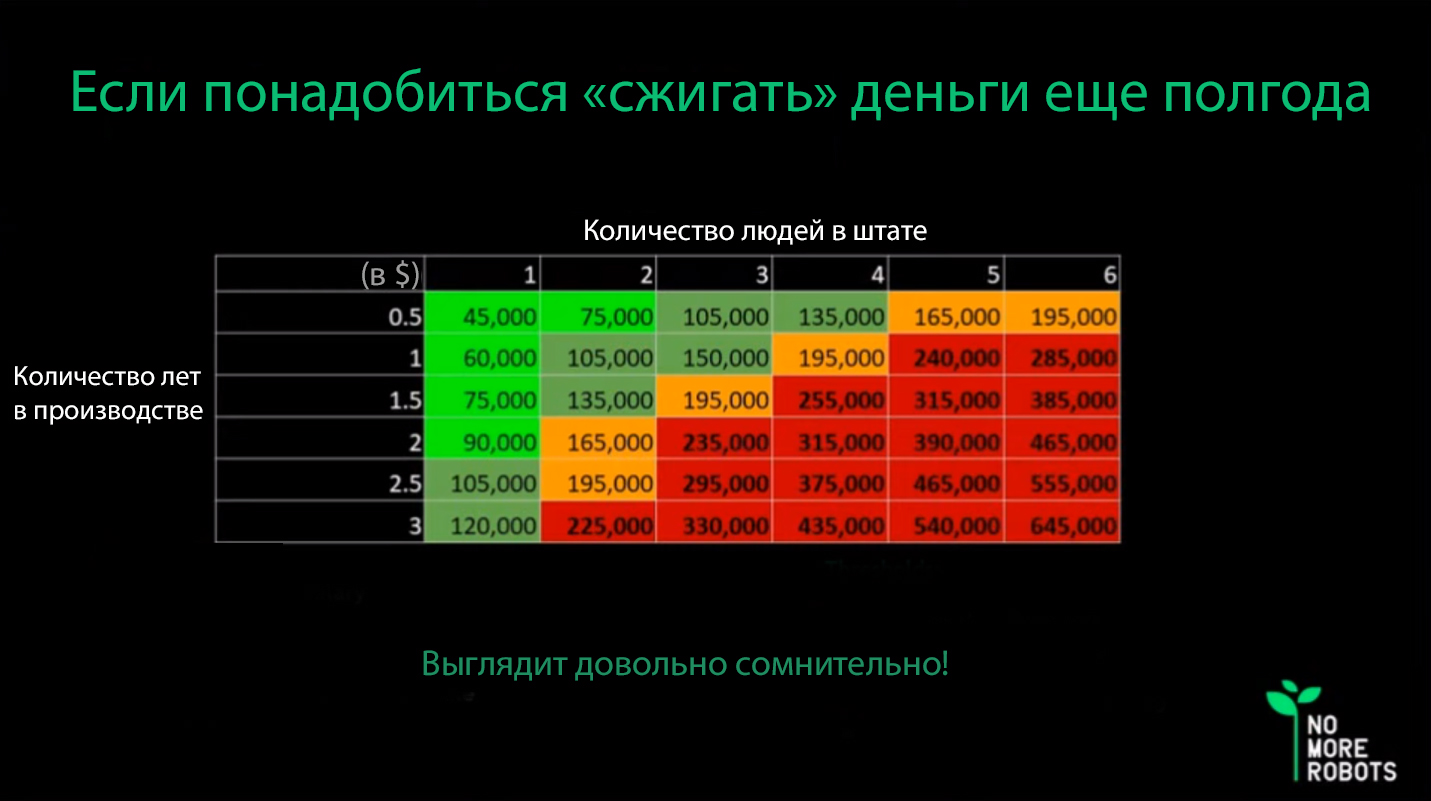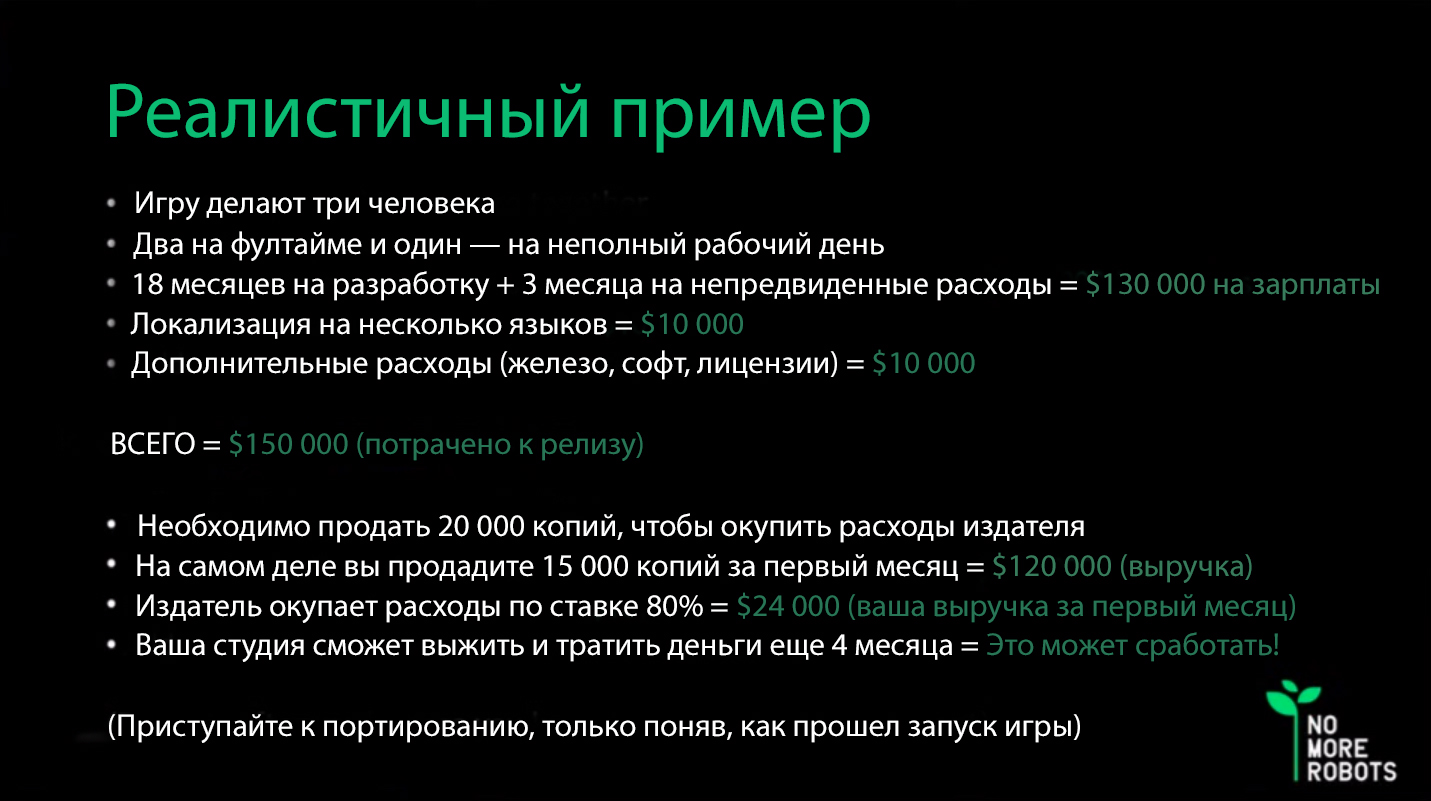Mike Rose, head of the indie publisher No More Robots, spoke about the principles of development planning. These tips can be useful for aspiring indie studios who have yet to release their first game. Rose gave several formulas for calculating the budget and explained why long-term development risks not paying off.
The full recording of Rose’s speech appeared on the Game Developer channel. We present the key points from the presentation.
How to assess the prospects of development?
Rose advises all novice studios to use the following formula to calculate how financially viable game development will be.
At the same time, he clarifies that this is a very simplified formula. Each team needs to adapt it to itself and the conditions in which it develops its project.
By “unforeseen circumstances” Rose means any deviation from the original plan. Most often, this is the extra time the studio needs to complete development.
It is important that the figure on the left is always lower than the number of copies that you expect to sell in the first month after the release. In practice, it works as follows:
Rose took $30,000 a year for an average salary. Additional costs may include localization or equipment costs. The figures given in the example are quite modest — in practice, the costs can be much higher.
On average, the studio receives about $8 from one copy sold (at a price of $20 for the game). That’s how much the developer will usually get after deducting all platform commissions and taxes, as well as converting prices in different currencies.
Even with such modest estimates, the studio will need to sell at least 25 thousand copies per month. According to Rose, in practice, very few projects are able to achieve such a result.
How to calculate production costs?
For a rough calculation of production costs, Mike Rose offers the following table. It becomes obvious from it — the more time the studio spends on development and the more people work in it, the less chances there are to reach payback.
Also, all these calculations are valid only for a game being developed for a single platform. The cost of porting is a separate expense item, which can vary from $ 10 thousand to $ 100 thousand.
If the team is in the red zone, it will most likely not be able to recapture production costs. Those developers whose budgets fall into the green zone have a chance to make a profit in the future.
For example, a studio of four people needs two years to develop. In this case, the budget may exceed $ 250 thousand, which makes it almost impossible to recoup the cost of producing the game.
Mike Rose advises using a similar table and making your own edits to it in order to estimate your chances of success already at the initial stage.
It is also important for developers to remember that they will not start receiving money immediately after the release of the game. Payments from the platforms are received with a delay. In addition, the publisher will need to return its investment before starting to pay studio royalties.
In reality, most studios will probably need additional development time. That is why Rose advises putting another six months into the budget calculation, during which it will also be necessary to spend money.
In this case, the picture will be even more depressing.
What should I do to survive my first release?
Considering all of the above, Rose advises not to spend too much time on development. The ideal range is 6-12 months.
If the studio initially plans a four-year development, it may encounter many pitfalls. During this time, the gaming market can change a lot, and certain genres risk losing popularity.
The most realistic scenario is a year and a half long development with a budget of about $150 thousand. In this case, a team of three people is likely to be able to survive the launch of their first game and get at least a small amount of money to develop the next one.
According to Rose, long—term development has almost no effect on the quality of the game – it only makes its production more expensive. “The idea that the longer you work on the game, the more money it will bring you is a complete misconception,” he notes.
Other useful tips
- It is better for novice teams to focus on small projects. In this way, you can significantly reduce the risks, because it will take much less money and time to develop.
- Rose does not recommend trying to add all the planned mechanics and content to the game. In this case, you can simply not have time for the release, and this will greatly affect the quality of the entire project. Instead, it is better to postpone the development of some elements and add them after the launch. This will extend the support of the game and its lifecycle.
- It is not necessary to force the entire team to work fulltime from the very beginning of development. This is especially true for employees who have to rely on programmers and wait for the technical implementation of certain elements.
- Rose recommends considering the possibility of receiving grants. They are unlikely to cover all development costs, but they can be extremely useful for small beginner teams.
- It is necessary to take into account the burnout factor. Due to the great stress associated with preparing the game for release, part of the team may not be able to immediately take up the next project. The degree of burnout may depend, among other things, on how well the studio initially planned the development and organized the work processes.





